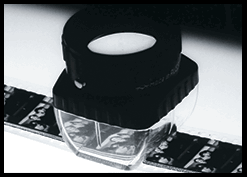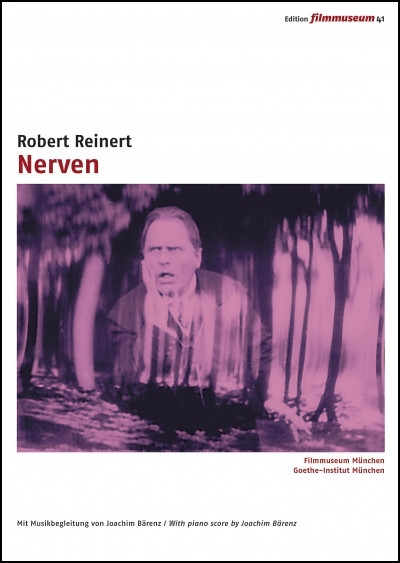GME DVD Distribution – Hou Hsiao-hsien's Early Works and Apichatpong Weerasethakul's Mysterious Object At Noon – Now Available on DVD for North American Institutional Sale
/Gartenberg Media Enterprises is pleased to present DVD editions of works by contemporary Asian experimental narrative filmmakers, Hou Hsiao-hsien from Taiwan and Apichatpong Weerasethakul from Thailand. These two filmmakers represent the first Asian artists to be added to the GME distribution library, highlighting significant moving image works beyond the American and European regions of film production.
◊
The most dynamic filmmaker of the Taiwanese New Wave, Hou Hsiao-hsien, has become one of the most important filmmakers in world cinema. His very recognizable, contemplative style has influenced a whole generation, not only in East Asia.
CINEMATEK has gathered three early films on this 3 disc edition: the romantic comedies CUTE GIRL (1980) and THE GREEN, GREEN GRASS OF HOME (1982) which Hou made for the Central Motion Picture Corporation (with its policy of “Healthy Realism") and THE BOYS FROM FENGKUEI (1983), considered to be the turning point both cinematographically and aesthetically in his career.
“It’s clear that the most radical change that took place in Hou’s work after the commercial period is the foregrounding of more modernist forms of storytelling. A picaresque comedy like GREEN, GREEN GRASS was already episodic up to a certain degree, but THE BOYS further loosed causality, added open-endedness and set up a distinctly elliptical approach that would become another Hou trademark. It has been argued that this discontinuous, open approach to storytelling offers further proof of Hou’s Chineseness. But there are few aspects to this narrative style that Hou doesn’t share with Fellini, Antonioni, Godard, Fassbinder, or Wenders.”
– Tom Paulus, “All the Youthful Days: Hou at the Beginning”.
All three films have been restored by CINEMATEK under supervision of Hou Hsiao-Hsien and in collaboration with the Film Foundation (World Cinema Project). Every film is accompanied by an audiovisual essay by Cristina Álvarez López and Adrian Martin. In the accompanying booklet Tom Paulus (University of Antwerp) comes back comments on the early days of Hou Hsiao-Hsien's career.
“Hou has always been coy about the Ozu influence, and it’s true that the conventional pastoral image of the train delivering urbanites to the country [in THE GREEN, GREEN GRASS OF HOME] is as much John Ford as Ozu. And perhaps Ford is the more apt comparison: both directors have made masterful films about their respective country’s history and myths, with the passage from tradition to modernity marked as a train journey from country to city; both have a particular interest in communities and families and in the mundane details of everyday life, especially eating and drinking; both are obsessed with memory and recollection, especially s conveyed through oral or folk traditions; stylistically, both have an unmatched talent for deep and ensemble staging and favour long shots and low light levels; both are at once sentimental and detached, at home in the world and, as immigrants alien to it.”
– Tom Paulus, “All the Youthful Days: Hou at the Beginning”
◊
With his debut feature, MYSTERIOUS OBJECT AT NOON, acclaimed Thai filmmaker Apichatpong Weerasethakul expertly blended cinematic fact and fiction in a manner that fifteen years later continues to defy both easy categorization and comparison. A low-fi "genre bender," independently produced on a shoestring budget and subsequently endangered by neglect, MYSTERIOUS OBJECT AT NOON, has now been painstakingly restored by the Austrian Film Museum and the Film Foundation from the best surviving elements.
“Shot in fits and starts on a minuscule budget, MYSTERIOUS OBJECT AT NOON was modeled on the Exquisite Corpse add-an-element structure famous from French surrealism, in which drawings or texts are passed from person to person to elaborate upon, with the original materials hidden so that each addition does not adhere in any “logical” or predetermined way, resulting in a collective, randomly assembled piece (Hail Duchamp).
The title of Apichatpong’s debut feature was its first gift to critics; his films have been called “mysterious objects” countless times since, in a manner less glib than proleptic. Invoking a work’s enigma at the outset anticipates impenetrability, thereby excusing any critical inability to analyze or describe. That tactic proves most tempting with this compact but omnifarious “whatzit?”, with its source in Thai popular culture and American documentary and experimental cinema, its perplexing, and exhilarating conflation of genre (fairy tale, road movie, documentary, horror, science fiction, folk anthropology, musical) and tone (by turn sad, surreal, exuberant, teasing, harsh). Its style manages to be both ramshackle and concatenated: the film’s structure is linear and convoluted at the same time, its title a telling convergence of the unknowable (mysterious object) and the temporally exact (noon). If the precision of the latter turns out to be misleading – time in the film is largely unfixed, in flux, employing historical anachronism and refusing to mark either diurnal specifics or the three-year span it took to make the film – Object’s modus, as is often the case in Apichatpong’s subsequent work, depends on surprise and unreliability, a knowing errancy not only of narrative progression and coherency but also of such formal constituents as sound source and signature, succession of shots, and identification of setting and performer.”
– James Quant, "Mysterious Object at Noon"
This DVD release also includes three of the filmmaker's short works, selected by the director himself: THIRDWORLD (1997), WORLDLY DESIRES (2005) and MONSOON (2011), plus the Austrian Film Museum's now out-of-print 255 page monograph from 2009 on Apichatpong Weerasethakul and his films as an exclusive DVD-ROM feature.






























